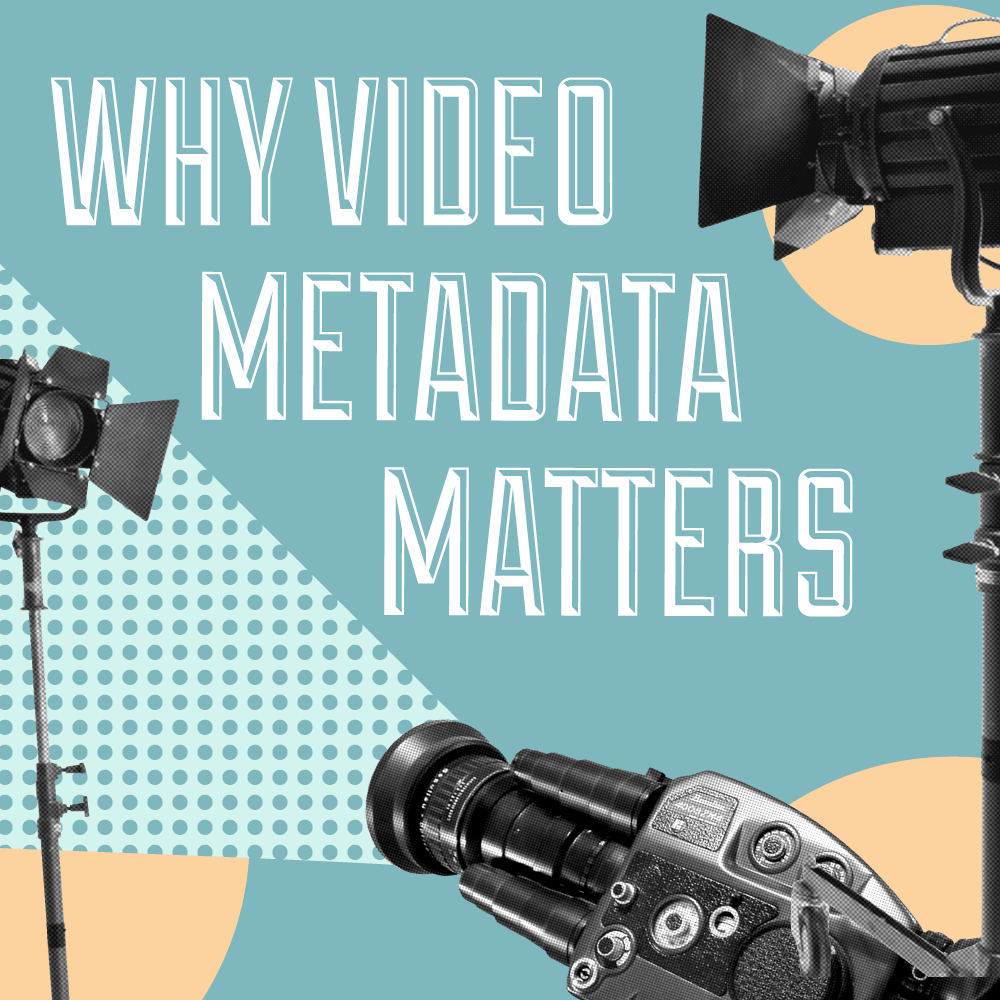So you want to have the next viral hit? Give your video its best chance for success with fully optimized video metadata. While you may have heard the word, many creators do not understand what metadata is and how to properly use it. If you’re looking for an easy way to increase your content’s discoverability while ensuring it’s properly protected here are a few tips on how you can make it happen with video metadata:
What Is Video Metadata?
Metadata is the information surrounding your video that tells viewers what your content is about and why they should be interested in watching. For video content, metadata can be broken into 3 main areas that include:
- Title: video headline; it is often the first thing viewers see when they are searching for your content. Beyond watch time, having an optimized title is the number one most important way you can boost your content discovery.
- Description: provides an opportunity to give further context about the subject matter of your video. Descriptions help viewers find, learn about, and decide whether or not they want to watch your video.
- Tags: similar to keywords, tags are words or phrases that categorize your content and help potential viewers find it.
Why is Video Metadata Important?
Metadata plays an important role in content discovery and protection, here’s how:
- Leverage video metadata to get discovered: Metadata makes it possible for search engines like Google to analyze and understand what your content is about and how it should be ranked. While most web pages are filled with written content that can be used by Google to rank, online videos use audio tracks to get their messages across, which is a lot harder for search engines to decipher. Google won’t know what your content is about unless you tell it, so surround your videos with descriptive text to boost discovery.
- Keep your content protected with video metadata: If you’re looking to get paid through monetization and keep your content protected from piracy, you will need to provide detailed and accurate video metadata for each individual asset you have rightful ownership over (music video, sound recording, composition). Content Protection systems, like Vydia Content Protection, utilize both video metadata and reference files to flag user-generated content and ensure the revenue is going back to its rightful owner. Earning money from UGC videos is only possible if you have correctly filled out your metadata.
How to Enhance Your Video Metadata
Now that you have a better understanding of what metadata is and why it’s important, here are a few tips to help optimize your video metadata for greater success:
- Present accurate information: Metadata is the foundation of your video’s SEO, so you will want to present accurate titles, tags, and descriptions that clearly depict what your content is about so viewers know what to expect. Misleading video metadata is often flagged by search engines and can prevent your content from being monetized or could lead to being removed.
- Include keywords everywhere: Make a list of the most relevant keywords that accurately portray your content. Be sure to include them throughout your title, tags, and descriptions.
- Don’t be afraid to get descriptive: Your video description offers you the most room to provide details about your content. Write robust descriptions (1-2 paragraphs long) to give an overview of what your video entails. Use the first few lines to present the most important information (i.e. what the video is about) in a natural and search-friendly language. Similarly, your tags can be up to 120 characters long. The more tags you use (as long as they are relevant), the higher your chance of being discovered.
- Order always matters: For titles and descriptions, present the most important information first to capture the audience’s attention.
- Capitalize on captions: Google also indexes videos with closed captions. Pack your transcript with relevant tags to increase views and improve your search rank.
For more tips and helpful hacks, stay up to date with our weekly blogs.
